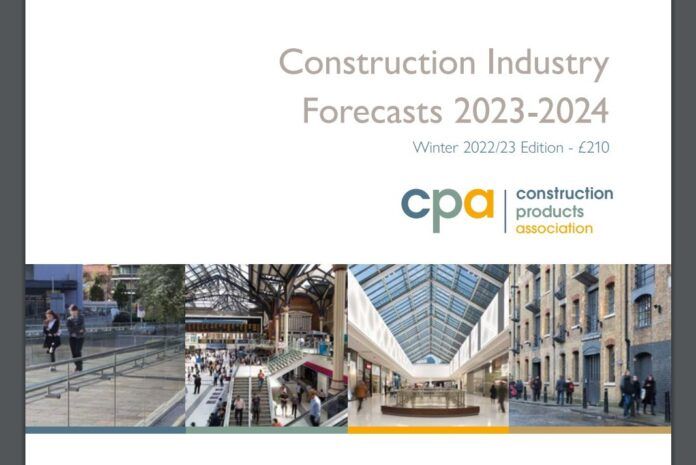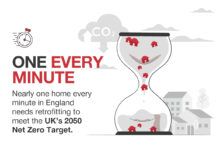
Construction output is expected to fall by 4.7% in 2023 before recovering slowly next year with 0.6% growth. The stats were published as part of the Construction Products Association (CPA)’s latest forecast, which is out today.
Glazing businesses and the wider home improvement sector may be comforted by the CPA’s finding that, though small home improvement work has been falling since March 2022, larger improvements continued last year as households had pencilled in the finance for it at the start of 2022. Given expected falls in wages and increases in mortgage payments for many households this year, a further decline in private housing repair, maintenance and improvement (RMI) output of 9.0% is forecast in 2023. This will focus on a fall in larger improvements activity, before slow growth of 1.0% in 2024 as activity recovers, the CPA has predicted.
One area of private housing RMI that continues to remain strong is energy-efficiency retrofit, the CPA’s experts reported. This is attributed to homeowner concerns over energy prices, insulation and solar panel installations.
“It is worth keeping in mind the broader context,” explained Noble Francis, the CPA’s economics director. “This is not 2008, and the decline is nowhere near the fall in output that occurred in the last recession. Looking back 15 years ago, construction output fell by 15.3% over two years during the global financial crisis.
“The construction industry has enjoyed a buoyant two years since the first national lockdown largely shuttered the industry back in spring 2020. Activity still remains high for the moment.
“Private housing and RMI, two of the three largest construction sectors, are highly dependent on the wider UK economy, interest rates, real wages and consumer confidence. So, as the UK economy falls into recession, interest rates rise, real wages fall and consumer confidence remains poor, construction output will fall sharply in these sectors. These falls will be partially offset by continued growth in infrastructure but that means that it is more important than ever that government maintains its commitments to meeting its own targets by investing in levelling up, its infrastructure pipeline and transitioning to net zero.”
The CPA predicts that private housing will be the sector most affected by the downturn. Fortunes for the sector over the next 12 to 18 months are likely to go one of two ways, the CPA’s experts have argued.
The main forecast anticipates a soft landing for the housing market, which involves a sharp decline in demand during 2022 Q4 and 2023 Q1 before a recovery in demand this spring. Private housing output in 2023 is forecast to experience an 11.0% fall as housebuilders focus on completing existing developments rather than starting new sites. This fall is primarily due to rising mortgage rates, falling real wages and poor consumer confidence. P
The largest impact of the decline in demand is likely to be on property transactions, the CPA has predicted, which it anticipates will fall in 2023 by around 20%. After two consecutive years of double-digit growth, house prices will return to levels seen around a year ago, according to the CPA. However, if demand doesn’t recover from spring as mortgage rates continue to fall, private housing could fall even further, as is outlined in the CPA’s lower scenario. Non-members can buy the full forecast from this webpage.



